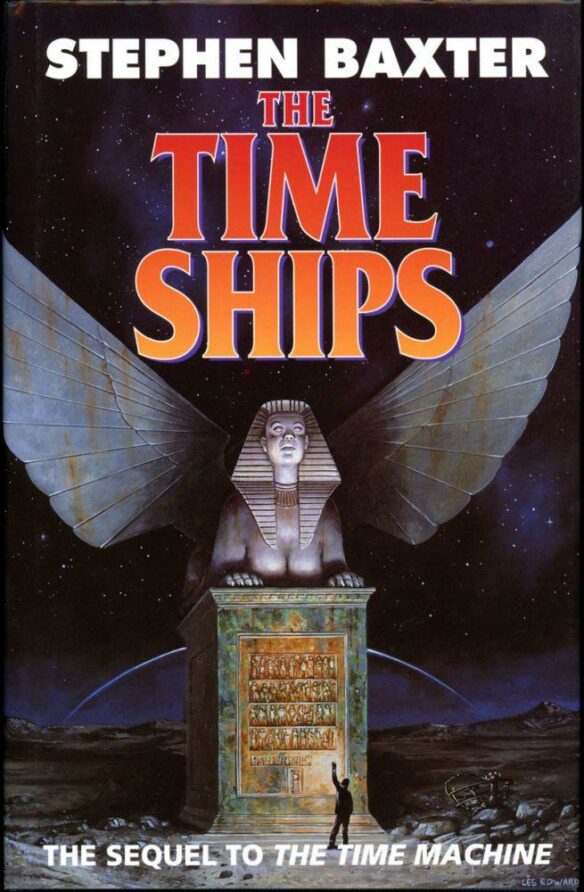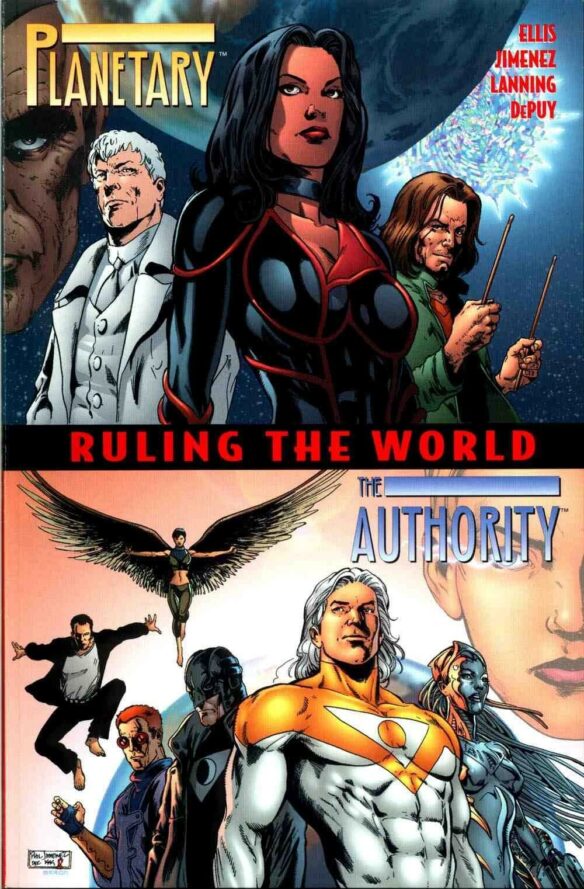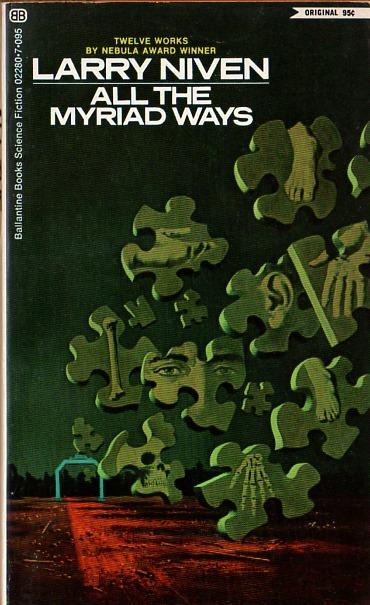(1) THIS IS YOUR BRAIN ON PERN. As soon as Threads started up, Catherynne M. Valente realized she needed to remind everyone she knows that “Mark F***king Zuckerberg Is Not Your Friend”.
…I’m not even very surprised at how many suspiciously-positive posts and memes I saw the millisecond Threads launched. Or how many big names and brands who’d refused to move to any of the other available competitors, not even so far as to hold a username and a server on Mastodon, the one most usable most quickly, just in case, suddenly had thriving Threads feeds. This is Facebook. It’s been several interminable minutes. We all know how this works. Bots, farms, artificial boosting, algorithms, astroturfing, paying influencers, brands, and celebrities to migrate without saying they were paid. We are not new here. Asking Facebook to not fake engagement and steal data is like asking Canadian goose not to rip anyone’s face off. That is, fundamentally, what it does and what it’s for.
What did surprise me? Well, it’s pretty fucking weird how the launch of Threads, which is ostensibly, you know, a company and a profit-generating service, almost immediately did a sickening costume reveal and became Mark fucking Zuckerberg’s Redemption/Woobiefication tour, and only like four non-Nazi people and one of their alt accounts are pushing back on that because everyone rushed to join this thing with a smile on their lips and a song in their heart a big anime heart-eyes for the guy we all knew was Noonian Soong’s first janky and obviously evil Build-a-Bloke workshop project three weeks ago.
Seriously, have we all lost our entire screaming minds?…
She has assembled acres of evidence about Zuckerberg’s and Facebook’s track record in case you forgot.
(2) BOTH A SPRINT AND A MARATHON. Cora Buhlert is doing the July Short Story Challenge again and she hasn’t missed a day yet: “The 2023 July Short Story Challenge – Day by Day”.
… What is the July Short Story Challenge, you ask? Well, in July 2015, Dean Wesley Smith announced that he was planning to write a brand new short story every day during the month of July. The original post seems to be gone now, but the Wayback Machine has a copy here. At the time, several people announced that they would play along, so I decided to give it a try as well. And then I did it again the following year. And the next. And the next….
(3) QUITE THE VARIETY. Rich Lynch’s diverting My Back Pages #28 is available to download from eFanzines.
The 28th installment of my personal time capsule is a “I think we’re finally escaping the pandemic” issue and has essays involving cheap hotel rates and a very expensive personal boondoggle, big balloons and a small cat, scary rollercoasters and not-so-scary sci-fi movies, notable edifices and ordinary-looking spring blossoms, artificial satellites and a very real sense-of-wonder, a long walking tour and a relatively short drive, a famous quote and a semi-obscure composer, a smart chatbot and a dumb stunt, complex machinations and elegant simplicity, drowsy Worldcon attendees and rousing march music, photos of the heavens and an underground fallout shelter, an extended hotel stay and a brief mountain climbing career, specialized historical research and an eclectic museum, National Poetry Month and The Year of the Jackpot. And also an ‘Un-bucket List’ – hey, *everybody* ought to have one of those!
(4) THE HOBBIT: COMPARING RANKIN/BASS WITH PETER JACKSON. [Item by Dann.] The first episode of the Cinema Story Origins Podcast Hobbit series dropped a couple of days ago. Paul J. Hale announced it on Facebook:
This whole episode is the first chapter of the book, the first 8 minutes of the Rankin/Bass Animated film, and the first 45 minutes of Peter Jackson’s “The Hobbit: An Unexpected Journey”.
A big chunk is about J.R.R. Tolkien, another chunk is Jackson’s prologue, but pretty much the rest of it takes place inside Bag End (Bilbo’s house). But I do some extra digging here and there, some stuff about the origin of The Dwarves in Tolkien’s Legendarium, and some extra info and context for certain things.
This is a large project, and I’m already started on Part 2. I have no clue how long these are all going to be. I want these episodes to be meaty on the Tolkien end, and lighter on the Jackson end, but we’ll see… I’m going to try hard to have this done by the end of summer but I can’t guarantee that. I really hope you enjoy this first chapter in the CSO Hobbit Series.
The CSO page for the episode is here: “The Hobbit: Part 1”
The link to the Apple podcasts page is here: “Cinema Story Origins: CSO 011a The Hobbit Part 1”.
I’ve listened to the first episode. Paul opens with roughly 20 minutes of history about JRR Tolkien. Some of the broad strokes are well known to Tolkien fans; his wartime service, his position as editor of the Oxford English dictionary, etc. There were a couple of morsels that were new to me. For example, the first line of The Hobbit originated from a very unusual circumstance.
As with all CSO series, Paul Hale is comparing and contrasting the original book with the movie versions. In this case, he is comparing the book the Rankin/Bass version of The Hobbit and with the Peter Jackson trilogy films. While Paul makes it clear that he thinks that making three films for a single book is excessive, he deals with the trilogy films as they exist and not as he might want them to be. Paul’s focus is on delving into the book and how the film creators interpreted the book. I believe that he will be only lightly touching on the many elements of the Jackson movies that do not exist in the book version of the story.
The first episode ends as Bilbo is rushing out the front door to meet the dwarves. The runtime is ever-so-slightly over 2 hours. Paul’s style makes every moment entertaining and informative. He sprinkles in audio stingers and other verbal bon mots to keep the presentation lively.
(5) AS FRIGHTENING AS DISCOVERING FIRE. Game Thinking TV brings us an interview with “Gödel, Escher, Bach author Doug Hofstadter on the state of AI today”.
Douglas Hofstadter, the Pulitzer Prize–winning author of Gödel, Escher, Bach, reflects on how he got interested in the mind and consciousness, how he came to write Gödel, Escher, Bach, and why he is terrified by the current state of AI.
(6) HAPPY BIRTHDAY WEBB TELESCOPE! The James Webb Space Telescope today celebrated its “First Year of Science With Close-up on Birth of Sun-like Stars”.
From our cosmic backyard in the solar system to distant galaxies near the dawn of time, NASA’s James Webb Space Telescope has delivered on its promise of revealing the universe like never before in its first year of science operations. To celebrate the completion of a successful first year, NASA has released Webb’s image of a small star-forming region in the Rho Ophiuchi cloud complex.
“In just one year, the James Webb Space Telescope has transformed humanity’s view of the cosmos, peering into dust clouds and seeing light from faraway corners of the universe for the very first time. Every new image is a new discovery, empowering scientists around the globe to ask and answer questions they once could never dream of,” said NASA Administrator Bill Nelson. “Webb is an investment in American innovation but also a scientific feat made possible with NASA’s international partners that share a can-do spirit to push the boundaries of what is known to be possible. Thousands of engineers, scientists, and leaders poured their life’s passion into this mission, and their efforts will continue to improve our understanding of the origins of the universe – and our place in it.”
The new Webb image released today features the nearest star-forming region to us. Its proximity at 390 light-years allows for a highly detailed close-up, with no foreground stars in the intervening space….

(7) MEMORY LANE.
1995 – [Written by Cat Eldridge from a choice by Mike Glyer.]
Stephen Baxter’s a truly prolific writer, he’s written close to fifty novels now with the Long Earth series that he co-wrote with Terry Pratchett being my favorite work by him. He’s written essays and short fiction beyond counting. Since there are fifteen collections of his short fictions, I’m guessing that most of it has been collected.
So what is our Beginning the Scroll? It’s The Time Ships, the sequel to The Time Machine, which was published by HarperPrism twenty-eight years ago.
It was nominated for a Hugo at the third L.A. Con. It also nominated for a BFA and a Clarke. It won the BSFA, John W. Campbell Memorial and Philip K. Dick Awards.
Shall we take a look at our Beginning?
The attached account was given to me by the owner of a small second-hand bookshop, situated just off the Charing Cross Road in London. He told me it had turned up as a manuscript in an unlabelled box, in a collection of books which had been bequeathed to him after the death of a friend; the bookseller passed the manuscript on to me as a curiosity–‘You might make something of it’–knowing of my interest in the speculative fiction of the nineteenth century.
The manuscript itself was typewritten on commonplace paper, but a pencil note attested that it had been transcribed from an original ‘written by hand on a paper of such age that it has crumbled beyond repair’. That original, if it ever existed, is lost. There is no note as to the manuscript’s author, or origin.
I have restricted my editing to a superficial polishing, meaning only to eliminate some of the errors and duplications of a manuscript which was evidently written in haste.
What are we to make of it? In the Time Traveller’s words, we must ‘take it as a lie–or a prophecy … Consider I have been speculating upon the destinies of our race until I have hatched this fiction …’ Without further evidence, we must regard this work as a fantasy–or as an elaborate hoax–but if there is even a grain of truth in the account contained in these pages, then a startling new light is shed, not merely on one of our most famous works of fiction (if fiction it was!), but also on the nature of our universe and our place in it.
I present the account here without further comment. Stephen Baxter

(8) TODAY’S BIRTHDAYS.
[Compiled by Cat Eldridge.]
- Born July 12, 1923 — James E. Gunn. Writer, editor, scholar, anthologist. Hugo winner at ConStellation (1983) for Isaac Asimov: The Foundations of Science Fiction. MidAmeriCon (1976) presented him with a Special Committee Award for Alternate Worlds: The Illustrated History of Science Fiction. The This Immortal series based on his novel by that name received a Best Dramatic Presentation nomination at Heicon ’70. Not surprisingly, he won a First Fandom Hall of Fame Award. (Died 2020.)
- Born July 12, 1933 — Donald E. Westlake. Though he specialized in crime fiction, he did dip into the genre on occasion such as with Transylvania Station with a lovely cover by Gahan Wilson. You can think of it as a Clue style novel. With monsters. He wrote with his wife Abby. On the horror end of things was Anarchaos. And he wrote a lot of genre short fiction, some fifty pieces by my count. Meteor Strike: Science Fiction Triple Feature has three of his SF stories is available from the usual suspects for ninety-nine cents. (Died 2008.)
- Born July 12, 1947 — Carl Lundgren, 76. He co-founded ASFA (Association of Science Fiction & Fantasy Artists of America), and won 4 Chesleys, including Artistic Achievement. At the tender age of eighteen, he was co-chairman of the first media SF convention, The Detroit Triple Fan Fair which featured comics, movies and various things of a SF nature. At Chicon IV, he was nominated for Best Professional Artist but lost out to Michael Whelan.
- Born July 12, 1946 — Charles R. Saunders. African-American author and journalist, much of his fiction is set in the fictional continent Nyumbani (which means “home” in Swahili). His main series is the Imaro novels which he claims are the first sword and sorcery series by a black writer. (Died 2020.)
- Born July 12, 1970 — Phil Jimenez, 53. Comics illustrator and writer. He was the main artist of Infinite Crisis, a sequel to Crisis on Infinite Earths. He also did the awesome first issue of Planetary/Authority: Ruling the World, and was responsible for the first six issues of Fables spin-off, Fairest.

- Born July 12, 1976 — Gwenda Bond, 47. Writer, critic, editor. She’s written a prequel to the Stranger Things series, Suspicious Minds, and I’m very fond of the two novels (The Lost Legacy and The Sphinx’s Secret) so far in her Supernormal Sleuthing Service which she wrote with her husband Christopher Rowe. And she penned the Dear Aunt Gwenda section of Lady Churchill’s Rosebud Wristlet that Small Beer Press published in the early part of this millennium.
(9) DEAD AND ALIVE. Animation World Network is on hand when “‘Zom 100: Bucket List of the Dead’ Comes to Crunchyroll”.
It’s alive! Crunchyroll has officially acquired the streaming rights for the zombie horror comedy anime series Zom 100: Bucket List of the Dead, which began its simulcast on July 9 with new subtitled episodes dropping weekly. The animated series, based on the hit manga series of the same name, is streaming on Crunchyroll in the United States; Canada; Australia; New Zealand; Latin America; Europe; the Middle East; North Africa; and the Indian subcontinent.
In the series, with three years under his belt at the company from hell, Akira Tendo is mentally and physically spent, all at the ripe old age of 24. Even his crush from Accounting, Saori, wants nothing to do with him. Then, just when life is beginning to look like one big disappointment, the zombie apocalypse descends on Japan! Surrounded by hordes of hungry zombies, Akira comes to the marvelous realization that he never has to go to work again and may now pursue his bucket list!
(10) NOT ALL THE BOTTLES ARE VINTAGE. ScreenRant points out the “10 Harsh Realities Of Rewatching Star Trek: The Next Generation 29 Years Later”.
10. TNG’s Holodeck Dangers Were Problematic
While several of TNG’s holodeck episodes included fun stories, there’s one thing about them that never made sense. While it’s understandable that the holodeck would need safety protocols, there is no logical reason why anyone (or anything) should be able to turn those safety protocols off. In TNG season 1’s “The Big Goodbye,” the safety protocols get mistakenly turned off by a probe scan, nearly resulting in the death of an Enterprise crewmember. In “Elementary, Dear Data,” the holodeck computer creates an adversary, Professor James Moriarty (Daniel Davis), who nearly takes over the Enterprise. It makes no sense that Starfleet would put holodecks on their most important ships when such catastrophic failures are possible.
(11) LOOKING GOOD. Okkto has a lot of suggestions about how you can get rid of that money burning a hole in your pocket. They have a page full of “’The Rocketeer’ Officially Licensed Collectibles” that includes this watch.

And artist Scott Nelles offers everything from a pulpy ray gun to this King Kong bank (cast in aluminum and bronze, and weighing four pounds!)
Sand-cast aluminum and bronze coin bank, depicting Kong climbing the Empire State Building. A pulpy and charming addition to your home or office, this coin bank will be a conversation piece and unique accent to your décor. Unscrew the pieces to collect your saved-up coins. Designed and hand cast by Scott Nelles in his studio/foundry in Elk Rapids, Michigan.

(12) PLAY YOUR CARDS RIGHT AND THEY’LL GET RICH. And Heritage Auctions would love for you to spend even more on these rarities: the Mars Attacks and Monsters from Outer Limits trading card sets.
There are 2 highly controversial trading card sets, that are very sought after today, that I would like to discuss a little about. Today they may seem a bit tame, but back in the 60s these were created by Topps with a pseudonym Bubbles, Inc. so that the company could distance the Topps name with the anticipated uproar that they would eventually create. The trading cards had a lot to do with aliens in space! Have you guessed it yet?….Did you guess Mars Attacks and Monsters From Outer Limits? If you did, then you are correct!
The infamous Mars Attacks was first released in 1962 by Topps via their Bubbles Inc banner, originally named “Attack from Space” on the test prototype launch. The standard 2.5”x3.5” set was 55 cards total in a $.05 pack of 5 cards with a piece of gum. All 55 cards tell a very graphic and gruesome story of Martians attacking Earth and eventually Earthlings attacking back. On the front of each card, there are colorful depictions of a progression of Mars attacking. The backs tell an explanation of what is depicted in the pictures on the front of the card. The cards and the concept were invented by Len Brown.
The drawings were mainly done by Norman Saunders and the story was created by Woody Gelman. It didn’t take long for these very graphic cards depicting Martians brutally killing humans and animals, gory death scenes, and sexual inuendos to create an upset with many parents. The parents were understandably upset because these very colorful cards of horror were marketed for kids. Lawsuits came one after another and Topps worked quickly to sensor 13 of their more violent pictures to be reprinted and dispersed. However, this never happened because a very large suit came forward from the community of parents and halted the production completely. Fortunately, for collectors, this meant the original set of 55 is very rare and valuable….
(13) VIDEO OF THE DAY. Here’s the official trailer for Wonka.
Based on the extraordinary character at the center of Charlie and the Chocolate Factory, Roald Dahl’s most iconic children’s book and one of the best-selling children’s books of all time, “Wonka” tells the wondrous story of how the world’s greatest inventor, magician and chocolate-maker became the beloved Willy Wonka we know today.
[Thanks to Mike Kennedy, Andrew Porter, John King Tarpinian, Cliff, Dann, Jeffrey Smith, Chris Barkley, Michael Toman, Cat Eldridge, SF Concatenation’s Jonathan Cowie for some of these stories. Title credit belongs to File 770 contributing editor of the day Jim Janney.]



